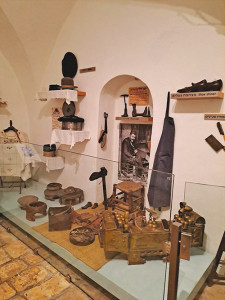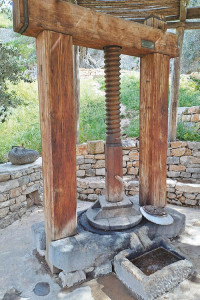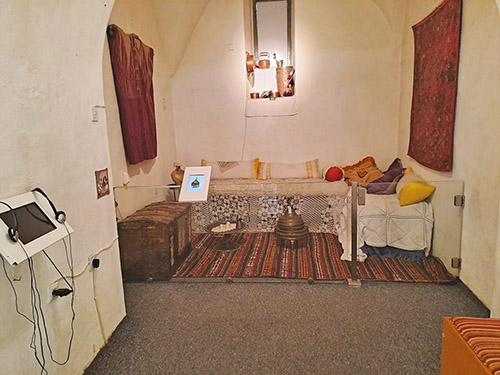
(Information for this article is based primarily on material provided by the Isaac Kaplan Old Yishuv Court Museum.)
Now, when we visit Yerushalayim, we see a modern city. Did you ever wonder what life was like for Jews living in Yerushalayim about 150 years ago? A visit to the Old Yishuv Court Museum on Ohr HaChaim street in the Old City gives us a glimpse of daily life during the Ottoman Era and British Mandate, from the 16th century until 1948.
As we enter this 500-year-old building, we will proceed to our first room. Although it looks just like a room, it was really home to an entire family; that means parents, children and often also an elderly grandparent. At night, mattresses were spread out on the floor. In the morning, these mattresses were collected and stacked into a pile and covered by an embroidered cloth. This was the couch for the day.
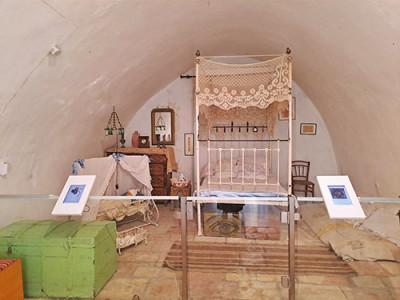
On one side of the room was a chest called a sanduk. This contained all of the valuables of the family. At the age of 8 or 9, a girl was given her own sanduk in which to store her needlework and other projects for her future family.
It’s important to note that most of the landowners at this time were Arab. Jews rented apartments from their Arab landlords. According to Ottoman law, tenants were required to vacate rental apartments every 11 months. This could be one reason for the minimal possessions that were owned by each family. Another obvious reason is the poverty of the Jews of the Old Yishuv. Almost everyone was impoverished. The “wealthy” were only slightly less impoverished than the poor! Nothing was wasted in the Old Yishuv. Clothes were constantly mended and reused. Old household items were recycled for other functions.
Let’s now proceed to another room which showed some of the improvements in living conditions in the late 19th century. Europeans who came to Eretz Yisroel did not want to sleep on the floor, so they brought beds with them. There were about six such “beds” in the Old Yishuv that could be rented by a devoted husband for his wife to use during childbirth. They could be folded easily and brought from place to place. The beds were often decorated with amulets as unfortunately the mortality rate for women in childbirth and infants was quite high. Lack of proper hygiene, medicine and sanitation all contributed to this sad reality.
All of these rooms surrounded a small courtyard which was the common area for the families of the building. It was here that women did laundry, cooked, schmoozed and took water from the local cistern. It was also here in this small courtyard that children would play with their home-made games. There was no money for fancy toys. They would jump rope, play with apricot pits and whatever other creative pastimes they could come up with.
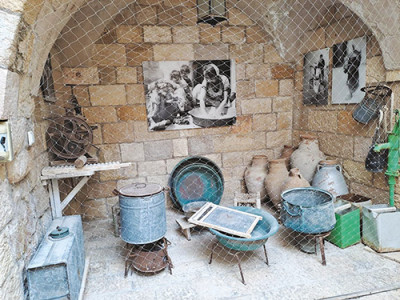
Another important room in this compound is the Ha-Ari Synagogue. It is believed that the Ari HaKadosh, Rav Yitzchak Luria, was born here in 1534. In 1906, Yeshivas Shaarei Shamayim, a kabbalistic yeshiva was established in this room. Afterwards, it functioned as a synagogue until it was destroyed in the 1936-1939 Arab riots. It has currently been restored as part of the Old Yishuv Museum and displays impressive old Torah covers and other forms of old Judaica artwork.
How did people earn a living in the Old Yishuv? The Jewish community received support from Diaspora Jews, known as “haluka.” However, that did not provide them with enough to survive. Jews went into various trades such as knife-sharpening and shoe-polishing. By the 19th century, there were also wineries, bakeries, tailors, printing shops and even candy stores. In yet another display in the museum, we can see various tools used by the artisans of that era.
It is clear that living in Yerushalayim over 150 years ago was not easy. There was poverty, disease and danger. Yet Jews sacrificed so much to make their homes in the holy city of Yerushalayim. May we be zoche to learn from their mesirut nefesh, self-sacrifice, and appreciate all of the modern conveniences we can today enjoy in Yerushalayim!
Know what this apparatus was used for? Be the first to email the correct answer to havapreil@gmail.com and receive a free drink at Lazy Bean Café in Teaneck. Stay tuned to learn more about it in our next article!
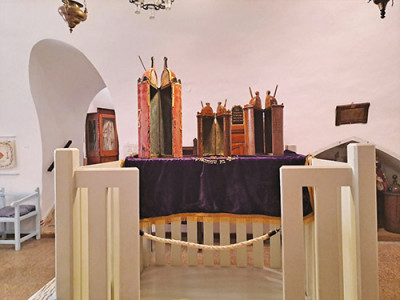
Hava Preil is an enthusiastic licensed Israeli tour guide. She grew up on the Upper West Side of Manhattan and holds an MA in Judaic studies. Hava has developed and taught accredited courses in Tanach and Jewish ethics for Naaleh/Woodmont College and Cybersem. She currently lives in Givat Ze’ev, Israel with her family. Hava can be reached at IL:054-844-1579, USA: 845-391-0438 or at Havapreil@gmail.com
